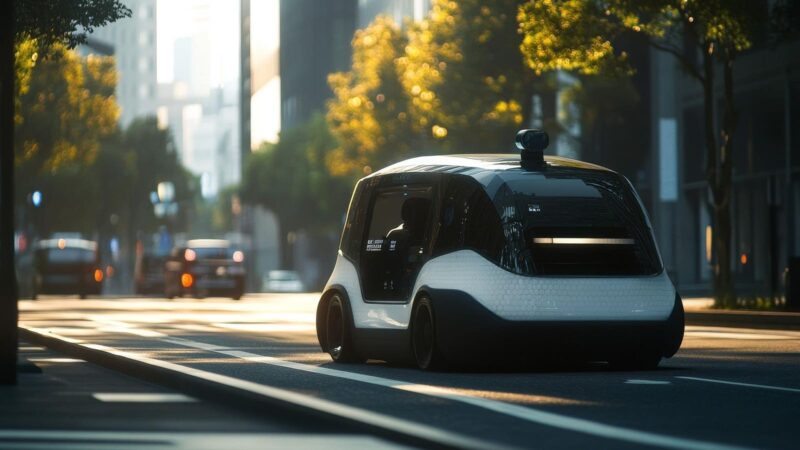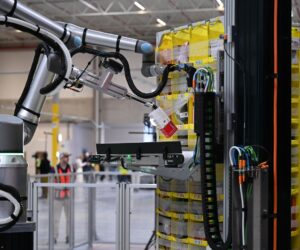Transport technology is accelerating into 2026 with flying taxi services launching in the U.A.E., autonomous truck trials starting on U.S. highways, and AI agents optimizing public transit systems.
Adobe Stock
In our increasingly digitized and connected world, the way we move people and goods from place to place is evolving at top speed.
Recent years have seen revolutionary advances in electrification, automation and intelligent networking of transport infrastructure. Self-driving cars, smart city technology and mobility-as-a-service providers are weaving data-driven networks across our cities, nations and continents, aiming to make transport quicker, safer and more sustainable.
And in 2026, we can expect to see the rate of innovation continuing to accelerate, including the launch of personal airborne drone transport and autonomous freight corridors redefining global logistics.
So let’s take a look at what I believe will be the key trends as we navigate towards the future of transport and mobility in 2026.
1. Autonomous Driving Expands Globally
With legislation moving forward, trials taking place in major cities and public confidence rising, we can expect efforts to expand autonomous driving to shift up a gear in 2026. Self-driving vehicles have now clocked up over 150 million miles on U.S. roads alone, and robotaxi services are operating in locations including China and the U.A.E., indicating that self-driving is quickly moving from pilot to reality. This year, Germany and Japan passed legislation enabling greater levels of autonomy, and the UK is expected to follow them soon. Having proven the concept, the challenge over the next 12 months will be to prove that autonomous driving can be scaled safely, reliably and affordably.
2. AI Agents In Public Transport
From minimizing delays by rerouting transportation to dynamically adjusting fares, responding to customer inquiries and proactively anticipating maintenance, AI agents will play a big role in public transport in 2026. A generational leap forward from chatbots like ChatGPT, agents are capable of handling complex, multi-step tasks and interfacing with external systems such as scheduling systems, customer service touchpoints and smart city infrastructure. They can help to run services more efficiently, create adaptive pricing models and minimize their environmental footprints—all priorities for operators in the coming year.
3. Autonomous Freight And Shipping
In 2026, we can expect to see autonomous freight corridors begin to take shape between ports and economic activity zones, with driverless truck trials launching globally. One autonomous fleet is scheduled to begin trial operations on U.S. Interstate-35 between Laredo and Dallas, and plans are moving forward to get self-driving trucks on the road in the E.U. as well as in China. The aim is to solve the problem of ongoing HGV driver shortages around the world, where recruitment has failed to keep pace with the increase in the volume of freight needing to get from A to B.
4. eVTOL And Autonomous Drone Transport
The skies are about to get more crowded, as electric vertical take-off and landing (eVTOL) as well as autonomous delivery drones transition from concept to pilot deployments. Major players include Joby Aviation, which is planning to launch its drone-based air taxi service in the U.A.E. in 2026, which will see the construction of “vertiports” to act as hubs for lightweight, automated aircraft. Meanwhile, in China, manufacturer EHang received final permission to operate commercial, passenger-carrying drone services this year, and is planning on expanding in late 2025 into the Middle East and Europe, potentially marking the start of a new age of advanced air mobility.
5. Vehicle-To-Everything (V2X) Connectivity And Commerce
In 2026, private cars and commercial vehicles—with their ability to collect vast amounts of data and carry out powerful computational tasks—are becoming platforms for advanced network connectivity and commerce. As well as negotiating and settling payment for parking, road tolls and charging, they will supply infrastructure providers, insurers and advertisers with anonymous data on usage, traffic and environmental conditions. By harnessing satellite and 5G networks, manufacturers like BMW hope to improve connectivity and convenience for customers as well as generate new revenue streams by turning vehicles into mobile data marketplaces.
6. Better EV Battery Technology
New types of solid-state batteries promise to bring us EVs with greater range and reliability, eliminating the need for frequent charging and problems caused by cell degradation in existing lithium-ion batteries. Solid-state batteries pack in more energy per kilogram and are more stable, meaning EVs can become lighter and safer. Mercedes and Stellantis are both planning to demonstrate solid-state-powered vehicles in 2026, and MG will put a vehicle using a semi-solid-state design into full production in China in late 2025. Although manufacturers aren’t predicting widespread adoption for five years or so, the coming year will be pivotal for pilots and prototypes of what is expected to be the next big leap forward in EV technology.
The transport trends of 2026 represent a fundamental shift in how we think about mobility, from individual car ownership to integrated, intelligent networks that connect our cities, skies and highways. As these innovations move from pilot programs to real-world deployment, the coming year will be crucial in determining which technologies successfully scale and which fall short.









